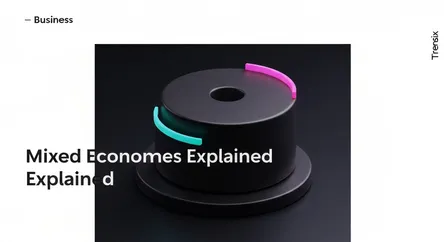Business
Mixed Economies Explained

Discover the mixed economy, a system blending private enterprise with government regulation to balance market freedom and social welfare.
What is it?
A mixed economy is a system blending private enterprise with government intervention. While individuals and companies drive most economic activity, the government plays a key role by providing public services, regulating markets, and creating a social safety net. It aims to harness capitalism's innovation while correcting for inequality and instability. Most modern nations, like the U.S., are mixed economies, differing only in their degree of state involvement.
Why is it trending?
Global crises are highlighting the limits of pure market systems, making the mixed model trend. The pandemic and climate change have increased calls for government action in public health and environmental policy. Concerns over wealth gaps are also driving discussions on social programs and regulation. Nations are re-evaluating the balance between private freedom and public good, making this adaptable model central to building resilient and equitable societies.
How does it affect people?
This system impacts daily life by balancing opportunity with security. People can own businesses but also contribute taxes for public goods like roads and schools. Government regulations offer consumer protection and ensure fair labor standards. While it involves bureaucracy and taxes, it provides a crucial safety net and reduces extreme poverty. It fosters a more stable economic environment where the benefits of growth are more broadly shared.